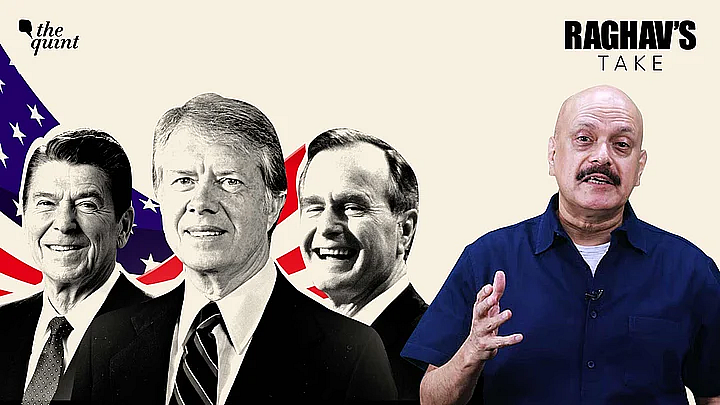Politics
Bill Clinton Strengthens US-India Ties Amid Pakistan Tensions

The relationship between the United States and India significantly improved during the presidency of Bill Clinton, marking a critical shift in the geopolitical landscape of South Asia. As tensions escalated with Pakistan, Clinton’s administration focused on strengthening ties with India, underscoring a new era of cooperation and dialogue.
Shifting Alliances and Economic Reform
The end of the Cold War in the early 1990s opened avenues for the United States and India to mend their previously strained relationship. With the fall of the Berlin Wall and the diminishing threat of Communism, both nations found common ground. The economic reforms initiated by India’s government in 1991 further facilitated engagement, as American corporations sought opportunities in what was then the world’s second-largest untapped market.
During the first Persian Gulf War, India allowed US military planes to refuel on its territory, a gesture that fostered goodwill. In contrast, Pakistan’s ongoing nuclear ambitions and support for militant groups strained its ties with Washington. Although the administration of George H.W. Bush never officially labeled Pakistan a state sponsor of terrorism, it privately held significant concerns about its actions, particularly regarding militant activities in Kashmir.
Clinton’s Diplomatic Dance with India and Pakistan
As Bill Clinton took office in 1993, the shift towards India became increasingly apparent. Initially, the US was preoccupied with the implications of the Cold War’s end, which made it hesitant to engage fully with India. However, by Clinton’s second term, the focus on building stronger Indo-US relations intensified.
The situation took a dramatic turn in 1998 when India conducted nuclear tests, prompting international criticism and subsequent sanctions. In response, Pakistan also conducted its tests, escalating regional tensions. Despite these challenges, extensive discussions between US and Indian officials laid the groundwork for a renewed trust that would shape future interactions.
The critical moment came during the Kargil Conflict in 1999, when Pakistani-backed militants infiltrated Indian territory. The United States pressured Islamabad to withdraw its forces, signaling a commitment to India’s security and further solidifying their partnership.
Clinton’s visit to India in 2000 marked a diplomatic triumph. This was the first visit by a sitting US president since Jimmy Carter in 1978. Accompanied by his wife and daughter, Clinton’s genuine admiration for Indian culture resonated with the public and political leaders alike. His visit coincided with a tragic incident in Kashmir, where militants killed several Sikhs, deepening his empathy for India’s ongoing security challenges.
In a significant address to the Indian Parliament, Clinton acknowledged India’s right to determine its interests despite its refusal to sign the Nuclear Non-Proliferation Treaty (NPT). He expressed solidarity with India’s concerns regarding Pakistan’s actions, stating, “I share many of your government’s concerns about the course Pakistan is taking.”
In stark contrast, Clinton’s brief stop in Pakistan was marked by a different tone. The arrival was shrouded in precaution, with a decoy plane landing first to ensure his safety. During a private meeting with Pervez Musharraf, Clinton urged Pakistan to confront militant groups operating in Kashmir, clearly indicating that Washington held Pakistan responsible for much of the conflict in the region.
Clinton’s message to the Pakistani public was equally direct. In a televised address, he emphasized that “violence and extremism” hindered Pakistan’s democratic aspirations, further distancing the US from Islamabad during this critical period.
The dynamics of US-India-Pakistan relations during the Clinton administration illustrate a notable pivot towards India, characterized by diplomatic engagement and a shared commitment to regional stability. As Clinton’s presidency drew to a close, the groundwork laid during this time would continue to influence the geopolitical landscape in South Asia.
In the next installment, we will explore the complexities of George W. Bush‘s presidency, particularly in relation to the post-9/11 world and its impact on nuclear negotiations with India.
-

 World5 months ago
World5 months agoSBI Announces QIP Floor Price at ₹811.05 Per Share
-

 Lifestyle5 months ago
Lifestyle5 months agoCept Unveils ₹3.1 Crore Urban Mobility Plan for Sustainable Growth
-

 Science4 months ago
Science4 months agoNew Blood Group Discovered in South Indian Woman at Rotary Centre
-

 World5 months ago
World5 months agoTorrential Rains Cause Flash Flooding in New York and New Jersey
-

 Top Stories5 months ago
Top Stories5 months agoKonkani Cultural Organisation to Host Pearl Jubilee in Abu Dhabi
-

 Sports4 months ago
Sports4 months agoBroad Advocates for Bowling Change Ahead of Final Test Against India
-

 Science5 months ago
Science5 months agoNothing Headphone 1 Review: A Bold Contender in Audio Design
-

 Top Stories5 months ago
Top Stories5 months agoAir India Crash Investigation Highlights Boeing Fuel Switch Concerns
-

 Business5 months ago
Business5 months agoIndian Stock Market Rebounds: Sensex and Nifty Rise After Four-Day Decline
-

 Sports4 months ago
Sports4 months agoCristian Totti Retires at 19: Pressure of Fame Takes Toll
-

 Politics5 months ago
Politics5 months agoAbandoned Doberman Finds New Home After Journey to Prague
-

 Top Stories5 months ago
Top Stories5 months agoPatna Bank Manager Abhishek Varun Found Dead in Well









